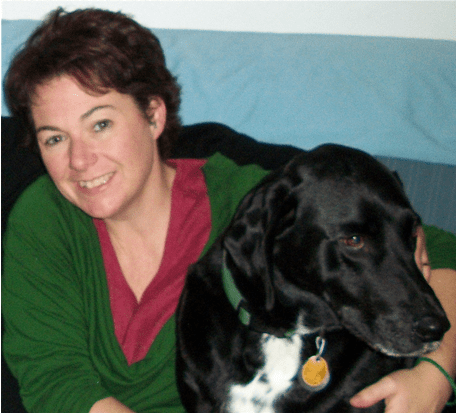I own a psychiatric service dog. He’s similar to a dog that would assist a blind person, but he’s trained differently. He’s not a therapy or emotional assistance dog, he’s a certified service dog and is allowed anywhere that a dog for the blind would be allowed to go.
Let me tell you my story and then you can decide if a psychiatric service dog would be right for you.
Eight years ago, I began having severe panic attacks related to a trauma from my past that I had repressed. Through therapy I began facing this trauma, but it took a toll. Because of the panic attacks I could not leave my house. I would occasionally venture out if I was with my husband, but mostly I stayed at home. I wasn’t working because I was caring for our two young children. At that time my world was scary and isolated.
Then I heard about psychiatric service dogs. These dogs were helping their partners live full lives. Their tasks ranged from nudging their partner to ward off or stop a panic attack or dissociation, retrieving medication, summoning help, providing balance assistance, or even calling 911 on a special K-9 phone.
My dog, an untrained, great big black lab was already helping me at home. He followed me from room to room. If I had to lie down, he was right next to me with his head on my chest. He made me feel better. He helped me feel safe.
I began doing research on the Internet. I found someone in my state who trained psychiatric service dogs. Could my dog be trained to help me outside the house as well?
I live in a rural town in Colorado. The dog trainer lived in Denver, many hours away. How was this going to work? I desperately wanted help and I knew my dog Cane could give it to me. I had two things going for me: determination and a supportive husband who happens to be an airline pilot and has free flight privileges.
I went about getting the necessary paperwork saying that my dog was in service dog training and I bought him a working dog vest. He seemed to know when the vest went on that it was time for him to be on his best behavior. It was time to work.
Once a week, me, my husband and Cane boarded a small commuter plane and headed to Denver. It was scary for me, but Cane helped me feel safe.
Our wonderful dog trainer arranged to meet us at the airport every week and that’s where we began learning skills and tasks. I say “we” because the handler is trained along with the dog. Cane and I would train for a couple hours then hop back on the plane for the ride home.
We made it to graduation day and at the party were other trainees. There was a Gulf War veteran suffering from PTSD, a woman with OCD, a man dealing with schizophrenia, and another with severe anxiety like me (this was before I was diagnosed with bipolar disorder).
Having Cane as a psychiatric service dog changed my life. I was able to go out in public again because he was right next to me. The anxiety didn’t disappear right away, but I felt much safer.
If you’re thinking of getting or training a psychiatric service dog, I have a few tips:
• Be aware that you will garner lots of attention with your service dog. A dog walking through Walmart or sitting underneath a chair in a restaurant is going to draw people. The dog will put himself between you and the people as a protective barrier, but it’s up to you to tell them that your dog is working and not there to be petted.
• The dog will take care of you, but you must take care of him too. You must feed him and take care of any of his health needs.
• If you do your own training, it is work. Most dogs live to please their owners, but they can get confused and stubborn during training. This is where a professional trainer is a must.
If you are determined, you won’t regret it.
By the way, Cane is short for Hurricane. He was a rescued dog from Hurricane Katrina. My local paper did a story on us after Cane got certified as a service dog. The headline read: “Woman, Dog Rescue Each Other.” They couldn’t have said it any better.
For more information on Psychiatric Service Dogs visit: www.petpartners.org/ServiceAnimalInfo


